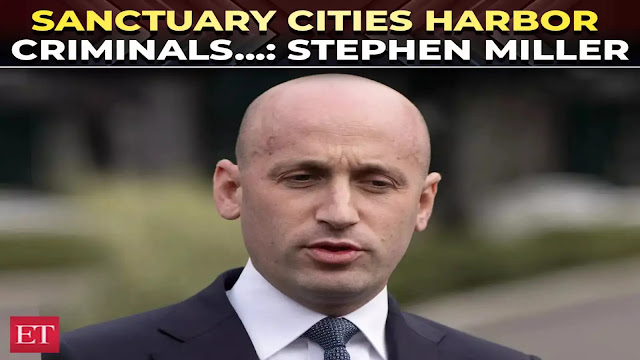#658
My Journal Entry:- ( Personal connection too!!).....
Headlines..
Today, May 8, 2025, marks the 80th anniversary of the end of World War II, a day when Nazi Germany surrendered to the Allied forces, bringing an end to one of the darkest chapters in human history. On this day, known as VE Day (Victory in Europe Day), the world breathed a sigh of relief as the brutal conflict that claimed millions of lives came to a close. As I sit down to write this blog, I want to reflect on the heroes, the sacrifices, and the lessons from that time—lessons that still echo loudly in our world today, from Ukraine to the Middle East and even closer to home in India-Pakistan tensions.
The End of the War and Its Global Impact
On May 8, 1945, Nazi forces officially surrendered to the Allies, led by General Dwight D. Eisenhower, the Supreme Commander of the Allied Expeditionary Force. As Allied troops marched into Nazi-occupied territories, the horrifying truth of the Holocaust and other Nazi atrocities came to light—concentration camps, mass executions, and unimaginable suffering. The world was forever changed.
I recently came across a statement by Caroline Leavitt, the White house, press secretary, that resonates deeply: without American intervention, Europe might have been speaking German today. I’d take it a step further—without America’s timely entry into the war, Asia might have been under Japanese control. My grandfather, born in 1900, used to tell me stories of Japanese air raid sirens blaring in Madras (now Chennai) when the Japanese had already taken Burma. The fear was real, and the stakes were high.
But it wasn’t just the Americans. The Soviet Union, despite the brutality of Stalin’s regime, played a massive role in defeating Nazi Germany. The Russians endured unimaginable suffering—millions died on the Eastern Front, from Stalingrad to Leningrad. While I, like many, have little love for the Soviet Union’s oppressive system or the atrocities they committed in occupied Europe, we cannot deny the resilience of the Russian people. Their sacrifice helped turn the tide against Hitler.
Heroes Who Shaped the Victory
On this anniversary, I want to honor the leaders and everyday heroes who made victory possible. These are the people who, through strategy, courage, and sheer determination, changed the course of history. Here’s my take on some of the key figures:
Gen Marshall (L) with President Gen Eisenhower (1952-60).
1. General Dwight D. Eisenhower and General George C. Marshall
Eisenhower, a Kansas farm boy, nearly lost his leg as a teenager but went on to become the architect of the Allied victory in Europe. As Supreme Commander, he was a master of delegation, trusting his generals to craft plans while he made the final calls. His leadership during D-Day and beyond was pivotal.
General Marshall, the unsung hero of the war, was a man with zero ego. His Marshall Plan rebuilt Europe and Japan, ensuring they didn’t fall to communism. Without Marshall’s vision, the post-war world might look very different. These two men are giants, and the world owes them an immense debt.
Churchill, FDR and Stalin.
2. Winston Churchill
Churchill is a polarizing figure in India, and for good reason—his policies during the Bengal famine were indefensible. But in the context of WWII, his foresight was unmatched. Early in the war, he saw Hitler’s evil intentions and forged alliances with the Americans and Soviets. His famous quote, slightly paraphrased, captures his wit: “You can always count on the Americans to do the right thing—after they’ve tried everything else.” (The exact quote is, “The Americans will always do the right thing, after they have exhausted all the other possibilities.”) Churchill’s defiance during Britain’s darkest hour, when the Nazis were bombing London, kept hope alive and paved the way for victory.
Truman Holding newspaper which predicted his defeat!!! Press always Fake news even then!
3. Harry S. Truman
Truman became president after Franklin D. Roosevelt’s death in April 1945, just months before the war’s end. His most significant,(The little quiet man from Kansas) decision was authorizing the atomic bombs on Hiroshima and Nagasaki. While controversial, this brought the war to a swift end, halting Japan’s aggressive march across Asia. The Pacific theater was brutal, with heavy American casualties, and Truman’s decision, however tough, saved countless lives by avoiding a prolonged invasion of Japan. America’s role in rebuilding Japan into a democratic nation is also a testament to its commitment to peace.
4. Major Richard “Dick” Winters
Not all heroes wore stars on their shoulders. Major Dick Winters, of the 101st Airborne’s Easy Company, was a junior officer whose leadership on the ground was extraordinary. From D-Day to the Battle of the Bulge, Winters led his men through impossible odds with courage and humility. If you haven’t watched Band of Brothers (a 10-episode miniseries, not 7 as I initially thought), do yourself a favor and see what true leadership looks like in the heat of battle.
5. Joseph Stalin (A Complex Figure)
I’m adding Stalin to this list, not to glorify him, but to acknowledge the Soviet Union’s role. Stalin was a brutal dictator, and his regime’s atrocities rivaled the Nazis’ in many ways. But the Soviet resistance, driven by the sheer will of its people, was critical. The Red Army’s victories at Stalingrad and Kursk broke the Nazi war machine. Stalin’s strategic partnership with the Allies, however uneasy, was a turning point. We can condemn the man while respecting the sacrifice of millions of Russians.
USS Nimitz supercarrier, the lead ship of her class, is named after him.
6. Admiral Chester W. Nimitz
Another figure worth mentioning is Admiral Chester Nimitz, who led the U.S. Navy in the Pacific. His strategy during battles like Midway and Guadalcanal crippled Japan’s navy, paving the way for Allied dominance. Nimitz’s calm leadership under pressure was vital to winning the Pacific theater.
Peck-Mallory, Niven-> Miller and Quinn-> Andrea.
Miller (Hanks) and Pvt Ryan (Damon).
Stories That Keep the War Alive
The stories of WWII live on through books and movies that capture the heroism, tragedy, and resilience of those times. Alistair MacLean’s The Guns of Navarone (Mallory, Miller, Andrea) and Leon Uris’s Exodus dive into the human cost of war and the Jewish struggle. Films like Saving Private Ryan, (Martinez, Miller) The Great Escape, and Schindler’s List bring the stakes to life, showing both the horrors and the hope. These works remind us of the sacrifices made and the lessons we must never forget.
A Personal Connection
This day is personal for me. My grand-uncle, my grandmother’s brother, ran away from home in the late 1930s, a rebel in his own right. He joined the British Army, fought in WWII, and died in Burma in his 20s. My grandmother would get teary-eyed every time she spoke of him. (Seems they got back his army uniform as with metal buttons as mortal remains, home!!) His loss is a reminder of the countless young men and women who gave their lives for a cause bigger than themselves.
The Lessons for Today
As we mark this 80th anniversary, I can’t help but think about Eisenhower’s farewell address on January 17, 1961 (not 1960, as I mistakenly recalled). He warned of the “military-industrial complex,” a system that profits from war and pushes nations toward conflict. His words ring true today as we see tensions in Ukraine, the Middle East, and even India-Pakistan relations.
War solves nothing. Ukraine shows us that even a smaller nation can hold its own against a giant Russia, but at what cost? The Middle East is a powder keg, and neocons in Washington are pressuring leaders like Donald Trump to escalate conflicts in Iran or Ukraine. Trump, who avoided starting wars in his first term, must resist this temptation now and distance himself, wisely. The greatest tribute to the heroes of WWII would be a commitment to peace.
A Call to Remember
Let’s honor the sacrifices of WWII by working for a world where dialogue, not destruction, prevails. The 80th anniversary of VE Day is a time to reflect on the courage of leaders like Eisenhower, Churchill, and Winters, the resilience of ordinary soldiers like my grand-uncle, and the millions who suffered. But it’s also a time to ask ourselves: how can we prevent history from repeating itself?
As I close this blog, I’m reminded of a line from Band of Brothers: “We weren’t heroes. We were just doing our jobs.” That humility, that sense of duty, is what made the Greatest Generation so great. Let’s carry their legacy forward by choosing peace over war, every chance we get.
What are your thoughts??
Karthik.
8/5/25 9am.











.jpg)


.png)
















